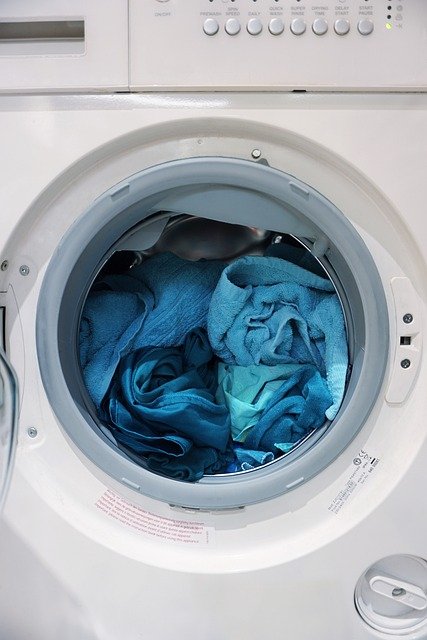What to Consider When Choosing a Washing Machine
Modern washing machines come with features that go far beyond simple wash and rinse cycles. From fabric-specific programs to self-cleaning drums and app-controlled settings, these appliances are built to enhance convenience. Understanding how these features affect energy usage, fabric care, and water consumption helps users make informed decisions before investing.

What are the functional differences between front-load and top-load washers?
When choosing a washing machine, one of the first decisions you’ll need to make is between front-load and top-load models. Each type has its own set of advantages and considerations.
Front-load washers are known for their superior cleaning performance and water efficiency. These machines use a tumbling action to clean clothes, which is gentler on fabrics and often results in less wear and tear. Front-loaders typically use less water and detergent compared to their top-loading counterparts, making them more environmentally friendly and cost-effective in the long run. However, they tend to have longer cycle times and may require bending down to load and unload laundry.
Top-load washers, on the other hand, are generally more convenient to use as they don’t require bending. They often have shorter cycle times and are usually less expensive upfront. Traditional top-loaders use an agitator to clean clothes, which can be harsher on fabrics but effective for heavily soiled items. High-efficiency top-loaders without agitators are also available, offering a balance between cleaning performance and fabric care.
What energy-saving features are commonly found in modern washing machines?
Energy efficiency is a crucial factor to consider when selecting a washing machine, as it can significantly impact your utility bills and environmental footprint. Modern washing machines come equipped with various energy-saving features designed to reduce water and electricity consumption.
One common energy-saving feature is the high-efficiency (HE) design, which uses less water and energy while still providing excellent cleaning results. HE washers often have sensors that detect the size of the load and adjust water levels accordingly, preventing unnecessary water usage.
Many modern washers also offer cold water wash cycles, which can clean clothes effectively while using less energy to heat water. Some models include eco-friendly cycles that optimize water and energy use for lighter loads or less soiled items.
Additionally, look for machines with ENERGY STAR certification, which indicates that the appliance meets strict energy efficiency guidelines set by the U.S. Environmental Protection Agency and the Department of Energy. These certified machines typically use about 25% less energy and 33% less water than standard models.
How does smart technology improve the laundry experience?
Smart technology has revolutionized many household appliances, including washing machines. These innovative features can enhance the laundry experience by offering convenience, customization, and improved efficiency.
One of the primary benefits of smart washing machines is remote control and monitoring. Through smartphone apps, users can start, stop, or monitor their laundry cycles from anywhere, receiving notifications when a cycle is complete. This feature is particularly useful for busy households or those with unpredictable schedules.
Smart washers often come with advanced diagnostics capabilities. These systems can detect potential issues early on, alerting users or service technicians to prevent more significant problems. Some models can even troubleshoot minor issues without professional intervention, potentially saving time and money on repairs.
Customization is another advantage of smart technology in washing machines. Many smart models offer the ability to download additional wash cycles or create custom programs tailored to specific fabric types or soil levels. This level of customization ensures that each load receives the optimal cleaning treatment while potentially extending the life of your clothes.
Moreover, some smart washers can integrate with other smart home devices or voice assistants, allowing for seamless operation within a connected home ecosystem. For instance, you might be able to start a load of laundry using voice commands or have your washer communicate with your dryer to preset the appropriate drying cycle.
What are the key capacity considerations when choosing a washing machine?
Selecting the right capacity for your washing machine is crucial for efficiency and convenience. The capacity you need depends on factors such as household size, laundry frequency, and the types of items you typically wash.
For small households or individuals, a compact washer with a capacity of 1.5 to 3.5 cubic feet may be sufficient. These smaller models are ideal for apartments or homes with limited space. Medium-sized households of 3-4 people might find a washer with 3.6 to 4.5 cubic feet more suitable, accommodating larger loads and bulky items like comforters.
Larger families or those who do laundry less frequently may benefit from high-capacity washers ranging from 4.6 to 6+ cubic feet. These machines can handle very large loads, reducing the number of cycles needed and potentially saving time and energy.
When considering capacity, it’s important to balance your needs with the available space in your laundry area. Measure the designated space carefully, accounting for door clearance and any required hookups, to ensure the machine you choose will fit comfortably in your home.
How do washing machine features impact noise levels and vibration?
Noise and vibration are important factors to consider, especially if your laundry area is near living spaces or bedrooms. Modern washing machines offer various features designed to reduce noise and vibration, enhancing the overall user experience.
Anti-vibration systems, such as specially designed drums or stabilizing legs, help minimize movement during spin cycles. This is particularly important for front-loading machines, which typically spin at higher speeds than top-loaders.
Direct drive motors, found in some high-end models, can significantly reduce noise and vibration compared to traditional belt-driven systems. These motors are directly attached to the drum, eliminating the need for belts and pulleys that can create additional noise.
Some washing machines feature noise reduction technology, such as improved insulation or sound-dampening materials, to minimize operational noise. Additionally, look for models with adjustable spin speeds, allowing you to choose a lower speed for quieter operation when needed.
Consider the location of your laundry area when evaluating noise and vibration features. If the washer will be installed on an upper floor or near quiet areas of your home, prioritizing models with advanced noise and vibration reduction capabilities may be worthwhile.
In conclusion, choosing the right washing machine involves carefully considering various factors, including the type of loader, energy efficiency, smart features, capacity, and noise reduction capabilities. By evaluating these aspects in relation to your household’s specific needs and preferences, you can select a washing machine that will provide efficient, effective, and convenient laundry care for years to come.




